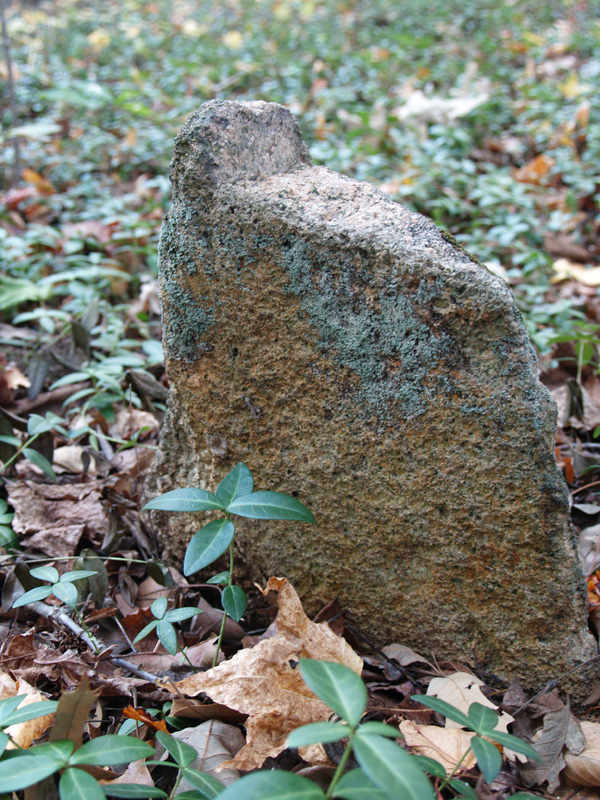A few markers were chiseled blocks of granite with names and dates. They were much newer, closer to the road, and seeing them you at least had a name to connect with the depression in the undergrowth. But further into the place, deeper into woods that had grown up since those markers were placed, there were only stones here and there and it took a while before you could see that there were rows of stones. Some were very small, just the size of a hand and barely poking out of the vinca minor that covered the forest floor. Some were several inches tall, prominent compared to the others, and a couple bore marks of human effort to alter their shape. Lichens and moss were on the stones in patches and downed limbs, stumps and the undulations of the land made it difficult to see at first that the lines of stones stretched for a ways and then, looking deeper, it became apparent that there were multiple rows, and then the awful moment came when the thought sinks in that each stone stood for a person and each person brought to this place had lived and died a slave.

There is history that makes its way almost naturally into the public knowledge, history that’s likely lost for good and then there is the history emerging.
For the better part of 25 years, driving Smith Level Road in and out of town has been for me an almost daily occurrence. And I’ve passed the old Smith family farmhouse and wondered many times about what the past was like along the ridge road between northern Chatham and southern Orange.The Smiths were great benefactors of the university, a historical fact that’s been on record for more than half a century. That is the part of the history that has passed with relative ease into local knowledge.
Over time, other parts of the history have emerged, including the family story passed on by Pauli Murray, who in her 1954 book Proud Shoes retold the history that so tormented her grandmother — the story of two Smith brothers who became bitter rivals over one of their slaves. Four children, including Murray’s grandmother, were brought into this world both slave and kin.
The shame, the story goes, led the family to move from its home in Hillsborough to a new place on the road that to this day bares the family name.
The stones in the woods nearby stand to remind us that there is much that’s forgotten, most of it forever. And though there is no narrative, no set of facts and no names to go with them, there is a history you can feel — one that unveils itself at the level of the soul and, in that place, cannot be forgotten or denied.
—Kirk Ross
One reply on “Written in stone”
[…] literature, publication is out this week. Featured stories include: • Finding Pauli Murray; • Written in Stone — reflections on black history • Hidden Voices’ Because We’re Still Here […]